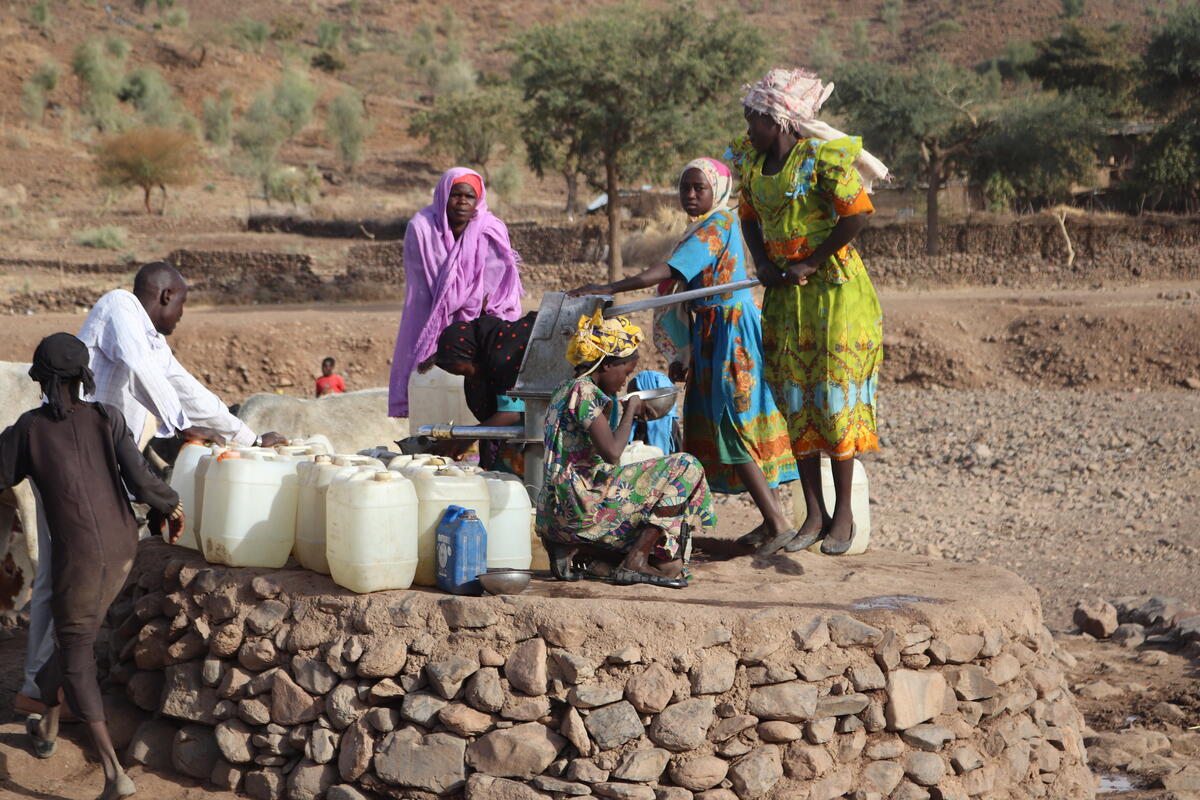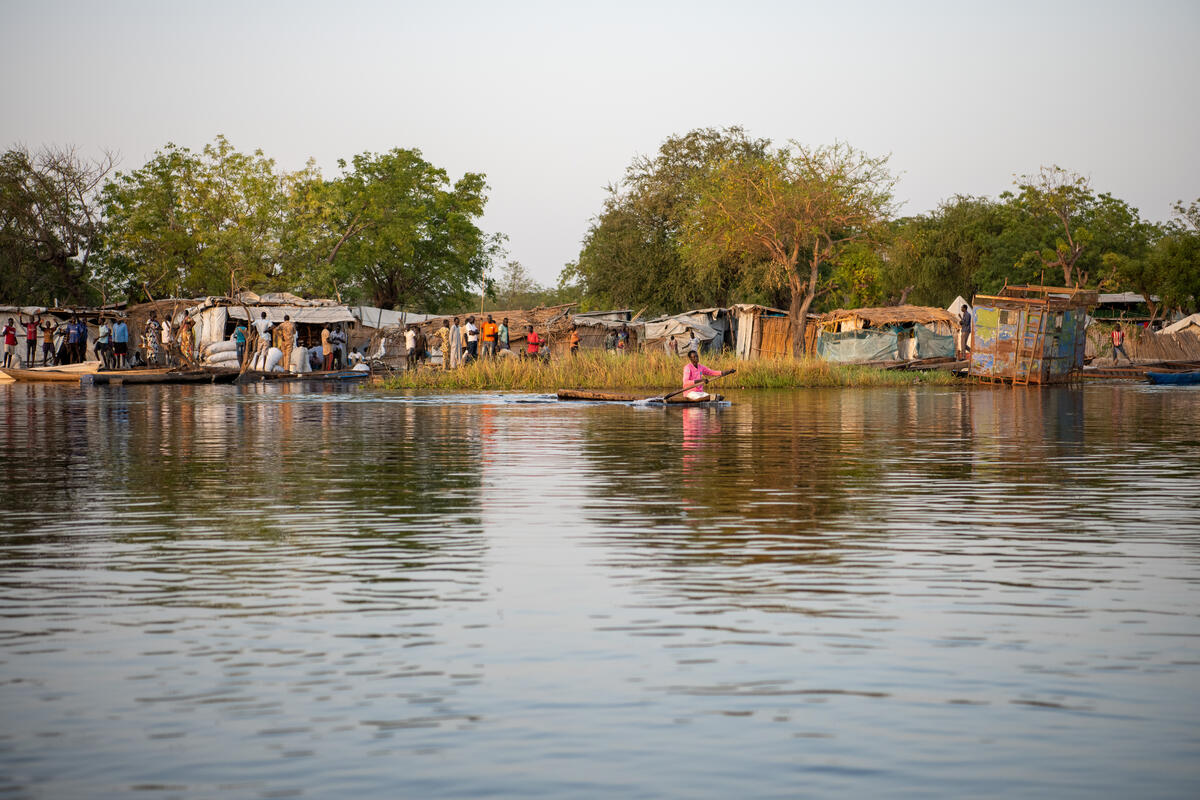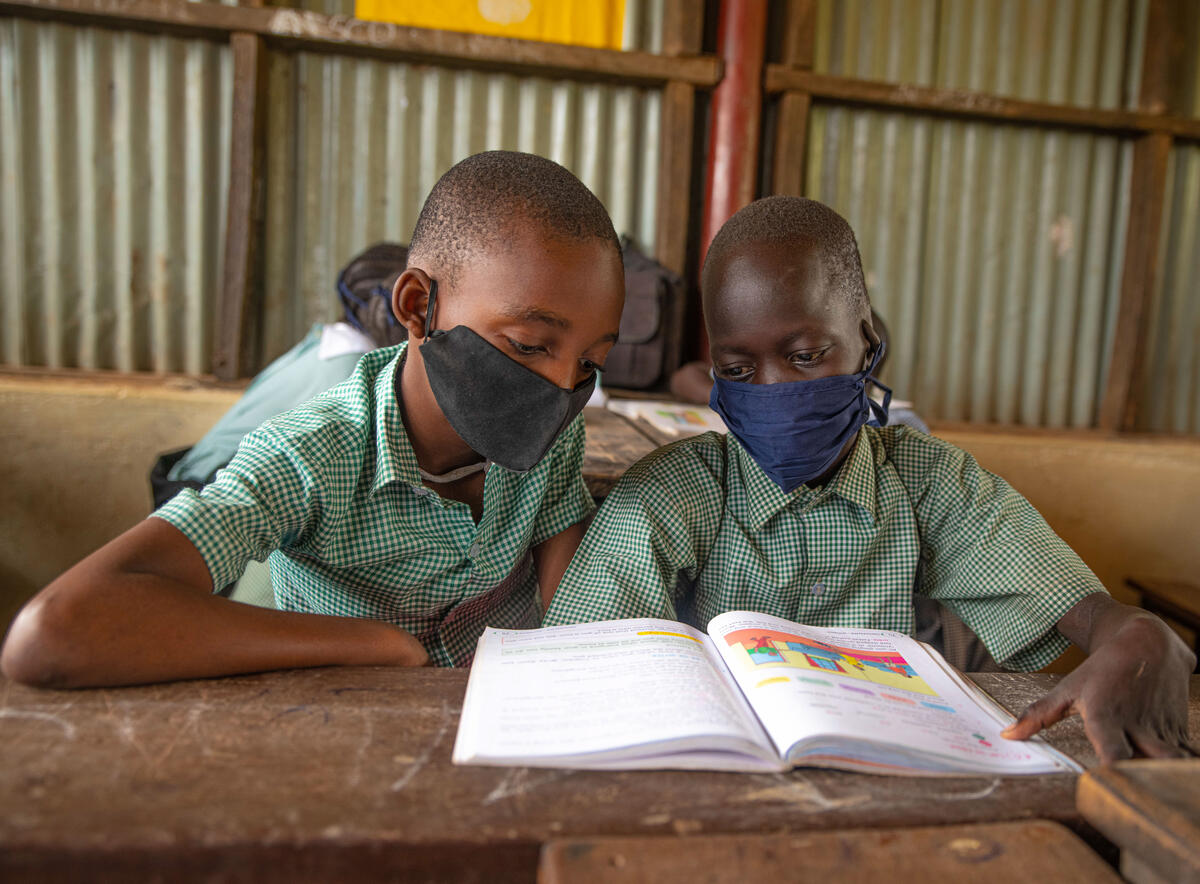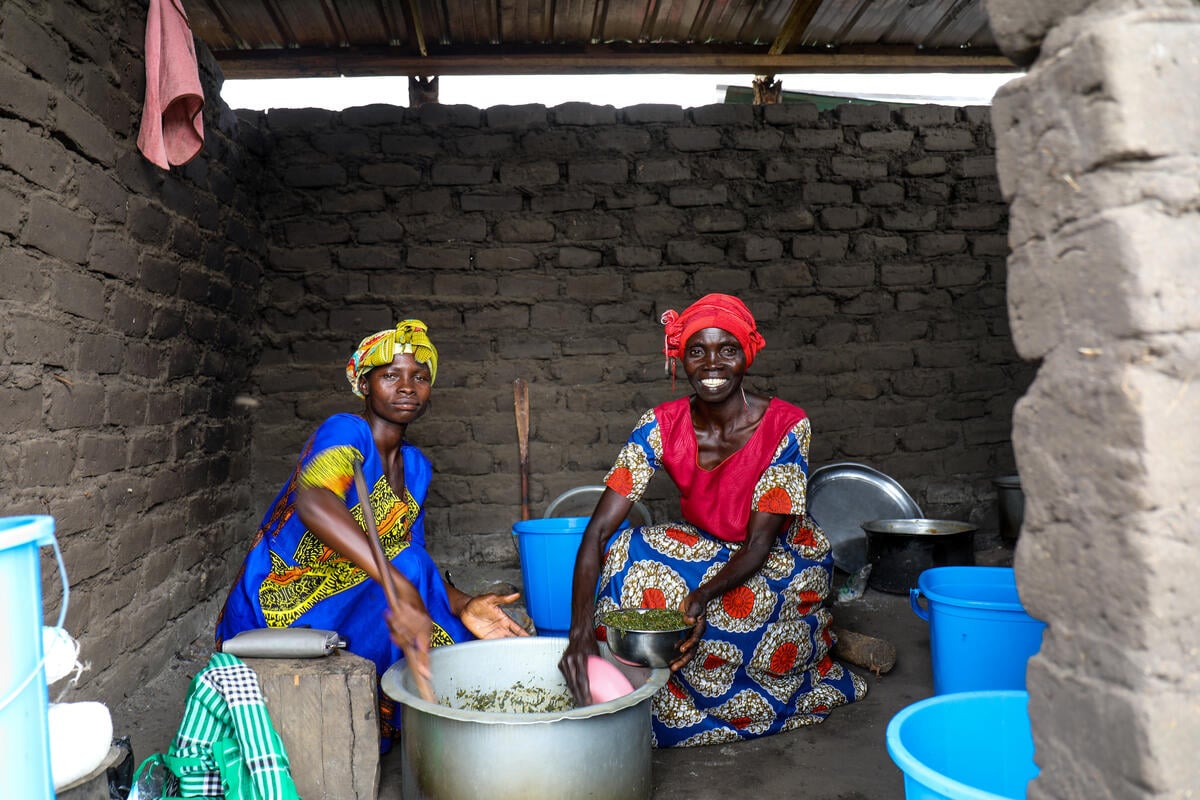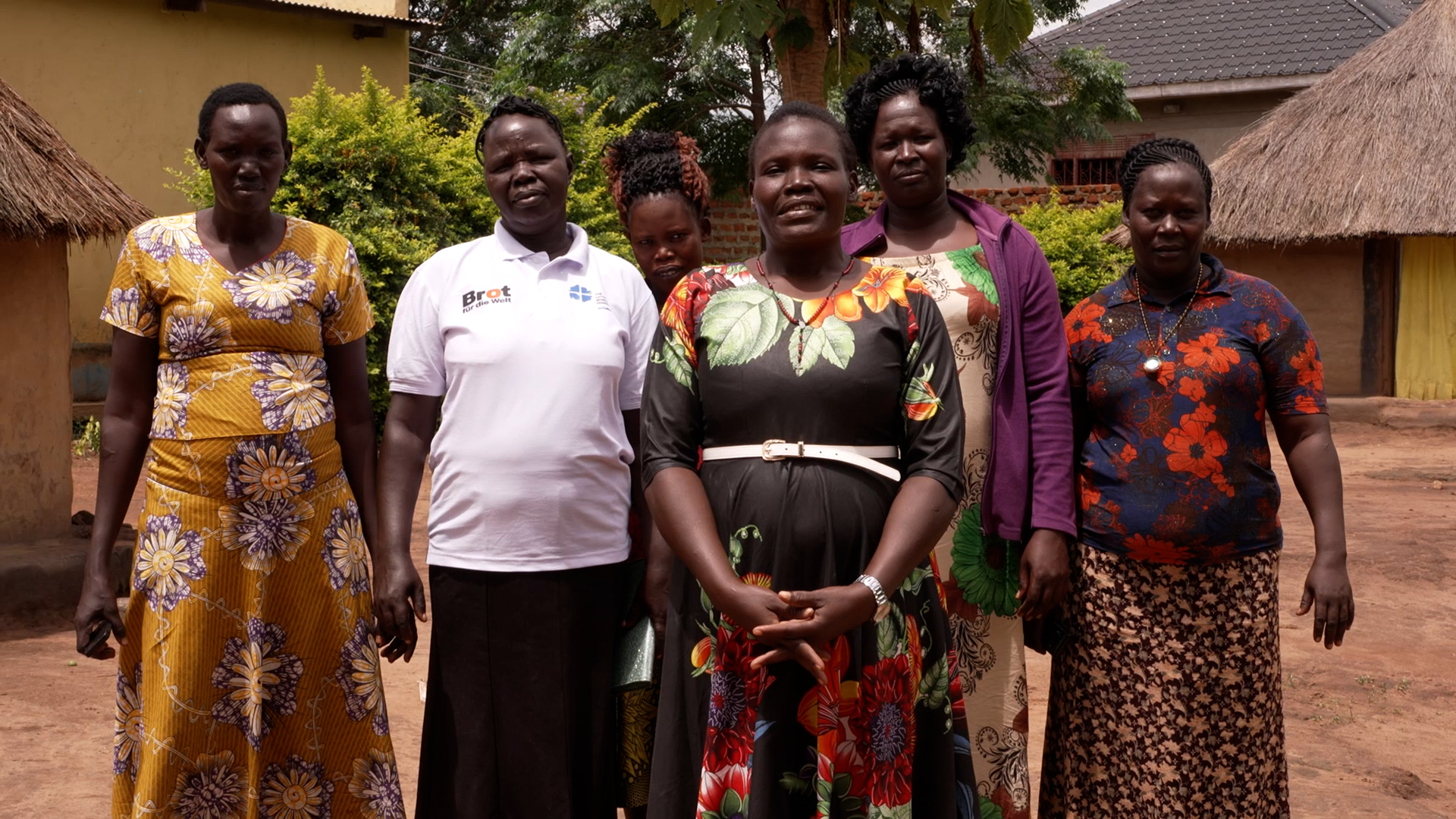New militia violence drives more South Sudanese to Uganda
New militia violence drives more South Sudanese to Uganda

ADJUMANI, Uganda, Jan 20 (UNHCR) - Armed militias looting villages, torching homes, sexually assaulting women and forcibly recruiting young men into their ranks are factors driving a growing number of South Sudanese refugees to seek safety in neighbouring Uganda.
New fighting in previously peaceful areas and insecurity elsewhere forced many to walk for days through the bush, carrying little more than the clothes on their backs, risking attacks from lions, hyenas and other wildlife as they sleep under trees at night, as well as from the marauding militiamen themselves.
"At night, people are sleeping in the bush because people are coming with guns looking for money and clothes," said Cicilia, 40, who fled home in South Sudan's Central Equatoria state, which had escaped conflict until recently.
"If you don't have anything they kill you. They rape the young women, and others they take to be their wives. I think more people are coming. The situation is really bad but still it's getting worse," she added, talking in Adjumani, the northern Ugandan town where she has ended up.
Fighting between the government and rebels in South Sudan, the world's youngest country, has produced one of the world's largest humanitarian emergencies with 2.3 million people forced to flee their homes, 650,000 of these across borders as refugees and 1.65 million displaced inside the country. A fragile peace was negotiated in that conflict in August.
But since then, new clashes have erupted in the country's south, where Cicilia is from. That, and ongoing difficulties faced by people elsewhere in South Sudan, mean that more than 400 refugees a day are now fleeing over the border into northern Uganda, a fourfold increase in numbers since early January. UNHCR, the UN Refugee Agency, the Ugandan Government and its partners, are ramping up their reception capacities in the area.
Most of the refugees are from Juba, the capital of South Sudan, and from Jonglei state. But a significant minority, like Cicilia, are also fleeing from the Equatoria states, an area from which relatively few refugees had previously been arriving.
Others have reported that the continued insecurity is making it increasingly difficult to harvest crops, leading to food shortages further exacerbated by the decreasing value of the South Sudanese Pound.
"People come with guns and knives," said Nyankor, 24, from Jonglei. "They destroyed our crops and killed all of our goats and cattle. We can't afford to buy more food. Before things used to cost one [pound] and now it is ten," he added.
More than 6,000 refugees have trekked to Uganda since the start of the year. Most cross through the border town of Elegu, with a smaller number arriving in Arua District through Kuluba, to the west, close to the border with the Democratic Republic of Congo.
Uganda's northern Adjumani District is already home to more than 113,000 South Sudanese refugees who have arrived in Uganda since the outbreak of the conflict just over two years ago, in addition to around 12,500 who were already being hosted in the country. Efforts are under way to expand the capacity of Maaji settlement to cope with the latest influx.
"The situation remains incredibly volatile," said UNHCR Protection Officer Akiko Tsujisawa. "Around three-quarters of the new arrivals are women and children under the age of eighteen, presenting particular challenges in providing adequate education, child protection and preventing sexual and gender-based violence. Many of the kids are having to take care of younger siblings who have lost their parents in the conflict."
Most of the latest arrivals are being hosted at Nyumanzi Transit Centre before they are transferred to nearby refugee-hosting villages. UNHCR is providing shelter, emergency relief items and food provided by the World Food Programme. Meanwhile, staff from Medical Teams International are providing basic health care, ensuring young children are properly immunized and screening for any signs of malnutrition.
The Transit Centre currently has a population of more than 3,600, significantly more than its 3,000 person capacity. UNHCR and the Government of Uganda have doubled the frequency of relocations to nearby villages to ease the congestion.
The majority of the recent new arrivals have been taken to Maaji village, but with the settlement now in excess of its 12,000 person capacity, a new area is being cleared nearby that will be capable of hosting an additional 12,000 people.
"New arrivals are coming in at a faster rate than the Transit Centre can shelter them," said Micaela Malena, UNHCR's Associate Field Officer. "Our teams are working tirelessly to ensure they are provided with life-saving assistance, while efforts are underway to increase the capacity of the settlements to host these new arrivals. Reports from the refugees indicate the situation in these areas of South Sudan are getting worse so we're expecting more new arrivals to follow in the days ahead."
Uganda has adopted a pioneering approach to refugee management and protection, integrating refugees within local host communities. Refugees are provided with land on which to build new homes and grow crops, reducing dependency on humanitarian aid.
The country recently became host to more than half a million refugees and asylum-seekers, the highest number in the country's history, making Uganda the third-largest refugee-hosting country in Africa and the eighth-largest in the world. The vast majority of refugees are predominantly from the Democratic Republic of Congo, South Sudan, Somalia and Burundi.
UNHCR recently launched its 2016 Regional Refugee Response Plan for the South Sudan humanitarian crisis, detailing the need for the agency to receive around $89 million dollars to provide refugees with life-saving assistance in the year ahead.
By Charlie Yaxley in Adjumani, Uganda

